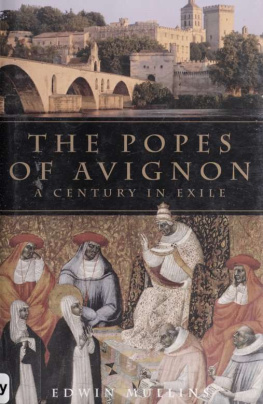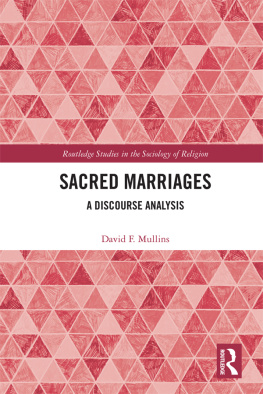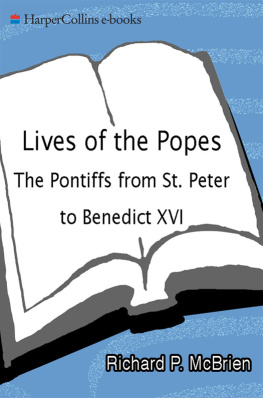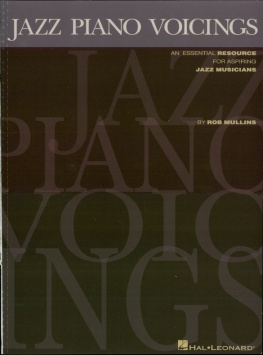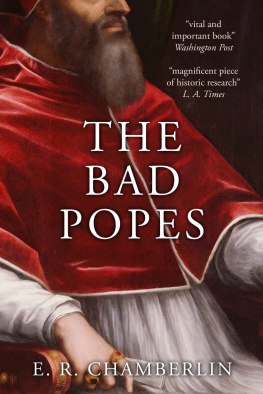Edwin B. Mullins - The popes of Avignon
Here you can read online Edwin B. Mullins - The popes of Avignon full text of the book (entire story) in english for free. Download pdf and epub, get meaning, cover and reviews about this ebook. year: 2008, publisher: BlueBridge, genre: History. Description of the work, (preface) as well as reviews are available. Best literature library LitArk.com created for fans of good reading and offers a wide selection of genres:
Romance novel
Science fiction
Adventure
Detective
Science
History
Home and family
Prose
Art
Politics
Computer
Non-fiction
Religion
Business
Children
Humor
Choose a favorite category and find really read worthwhile books. Enjoy immersion in the world of imagination, feel the emotions of the characters or learn something new for yourself, make an fascinating discovery.
- Book:The popes of Avignon
- Author:
- Publisher:BlueBridge
- Genre:
- Year:2008
- Rating:3 / 5
- Favourites:Add to favourites
- Your mark:
- 60
- 1
- 2
- 3
- 4
- 5
The popes of Avignon: summary, description and annotation
We offer to read an annotation, description, summary or preface (depends on what the author of the book "The popes of Avignon" wrote himself). If you haven't found the necessary information about the book — write in the comments, we will try to find it.
The popes of Avignon — read online for free the complete book (whole text) full work
Below is the text of the book, divided by pages. System saving the place of the last page read, allows you to conveniently read the book "The popes of Avignon" online for free, without having to search again every time where you left off. Put a bookmark, and you can go to the page where you finished reading at any time.
Font size:
Interval:
Bookmark:

This book made available by the Internet Archive.





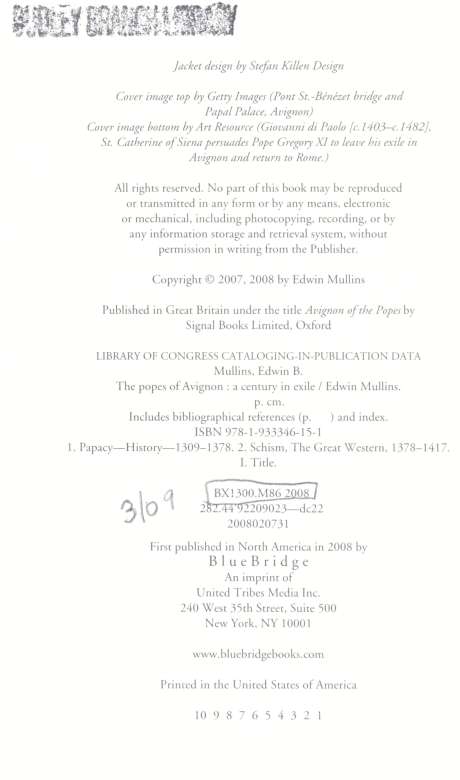
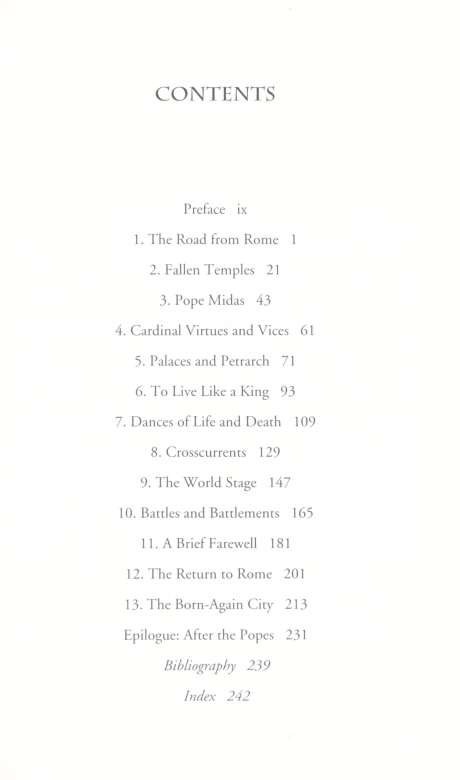
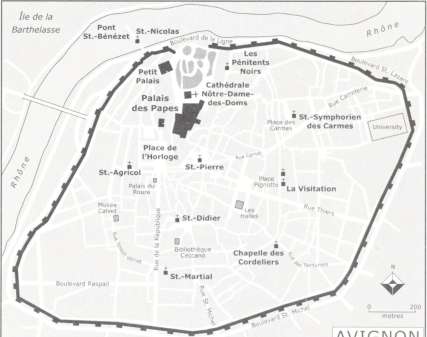
/ Pont St.-Ben6zet
He de la Barthelasse
St.-Nicolas
I de ^,Ugne
c#
Cathe
Les
Penitents
Noirs
Palais
Cathedrale Notre-Dame 1 des-Doms
Palais des Papes
* St.-Symphorien
Place des . _
Carmes des Carmes
University
Place de I'Horloge
^ d rr\Ot
P.ue
St.-Pierre
St.-Agricol
o
Palais du Roure
Place
r g ctfL La Visitation
Musee
Calvet
Les
Halles
i St.-Didier
Bibhotheque
Ceccano
Chapelle des ^
Cordeliers
%; Teintuners
St.-Martial
Boulevard Raspail
metres
AVIGNON

THE AVIGNON POPES
Clement V (1305-1314) John XXII (1316-1334) Benedict XII (1334-1342) Clement VI (1342-1352) Innocent VI (1352-1362) Urban V (1362-1370) Gregory XI (1370-1378)
AND ANTIPOPES
Clement VII (1378-1394) Benedict XIII (1394-1422/23)
PREFACE
For part of each year I live and work in an area of Provence known as the papal countythe Comtat Venaissin even though no pope to my knowledge has set foot in the region for over six hundred years, and considerably more than two hundred years have elapsed since the Vatican exercised any authority over the county whatsoever. Yet traditions cling on. At eight oclock every weekday morning close to our house a bus boldly decorated with a swipe of color and bearing the legend Cars Comtadin takes on its cargo of village schoolchildren and proceeds to transport them in the direction of Carpentras, which is still the capital of the papal Comtat.
Eleven miles beyond Carpentras stands Avignon, the former papal city, dominated by its hulk of a papal palace and ringed by massive ramparts which the popes erected in order to protect themselves against eyes that were even greedier than theirs were.
In short, the popes themselves may have long departed, but their ghosts have not. Their images still gaze out at us haughtily from bare walls in the heart of Avignon.
The story of this place and this region is one I have wanted to tell. The tale begins early in the fourteenth century when anarchy in Italy led to the capital of Western Christianity being moved from Rome for the First and only time in history. It was a critical moment, and it resulted in seven successive popes remaining in exile for the next seventy years. The city chosen to replace Rome was Avignon. And depending on where you stood at the time, they were seventy years of heaven, or of hellopinions invariably ran to extremes, as did the behavior of the popes themselves.
It was during this period of exile that Avignon witnessed some of the most turbulent events in the history of Christendom, among them the suppression of the Knights Templar and the last of the
The Popes of Avignon
heretical Cathars, the first major onslaught of the plague (the Black Death), the final collapse of the crusading dream, and the first decades of the Hundred Years War between England and France, in which successive Avignon popes attempted to mediate. The papal flight from Rome was fiercely castigated by Dante in The Divine Comedy , while during the later years of exile in Avignon the enigmatic figure of Petrarch, the most celebrated poet and scholar of his day, loomed angrily over the city.
This is a portrait sketch of that era. And at the center of the picture is Avignon itself, as it grew from being a relatively insignificant town on the River Rhone to become, albeit briefly, one of the great capitals of the world.
THE ROAD FROM ROME
I t was in August 1308 that Pope Clement V, a Frenchman, announced that the new home of the papacy was to be Avignon. And in the spring of the following year he moved there, to be joined soon afterward by the papal court.
Avignon was then a small town perched on a sentinel rock overlooking the most southerly bridge across the River Rhone and some fifty miles inland from the Mediterranean. Just as important as its strategic position was the fact that it was situated on the borders of the only territory owned by the papacy to lie safely outside Italy, and therefore beyond the reach of the political chaos which engulfed much of that land. At the same time, Avignon lay on the borders of France, whose monarch was the new popes most powerful ally. All in all, Clements choice seemed to make extremely good sense.
At that time Avignon had a population of scarcely more than five thousand inhabitants. Yet such was the impact of the papacy that within a few decades it came to grow larger than Rome itself and become one of the wealthiest and most glittering cities in Europe. To many who were drawn to Avignon from all over the known world it seemed a wonder of the worldnot so much on account of its piety and godliness as for the overwhelming presence of mammon: it was a city that dripped gold and jewels, a place of unmatched glamour and splendor. Hence to more severe observers the city was an object of loathing and contempt, a place where unholy opulence was coupled with greed, rapacity, nepotism, corruption, a shameless abuse of its power and wealth, and above all an outrageous moral laxity. In
The Popes of Avignon
short Avignon seemed to be an abuse of everything that Christ had stood for.
Avignon is the city that was created during those golden, or rotten, years by seven successive popes. All of them were as different from each other as human nature could allow, though bound in a semblance of unity by the massive weight of their common role the fact that they had been enthroned as the spiritual leaders of the Western Christian world. And it remains their city today, even though more than six hundred years have passed since their return to Rome in the year 1378. To stand on that sentinel rock is to stand on the shoulders of their history.
The first steps of the papal journey into exile were taken from another small hill town several hundred miles further south, in southern Italy a short distance beyond Rome. This was Anagni. In the mid-thirteenth century Anagni was the birthplace of a certain Benedetto Gaetani (sometimes spelled Caetani), whose family were Roman nobility of considerable influence and power. As a young man Benedetto entered the church, where he enjoyed a successful and by all accounts pious career, which culminated late in life in his election as pope in the year 1294, under the title Boniface VIII.
Font size:
Interval:
Bookmark:
Similar books «The popes of Avignon»
Look at similar books to The popes of Avignon. We have selected literature similar in name and meaning in the hope of providing readers with more options to find new, interesting, not yet read works.
Discussion, reviews of the book The popes of Avignon and just readers' own opinions. Leave your comments, write what you think about the work, its meaning or the main characters. Specify what exactly you liked and what you didn't like, and why you think so.

